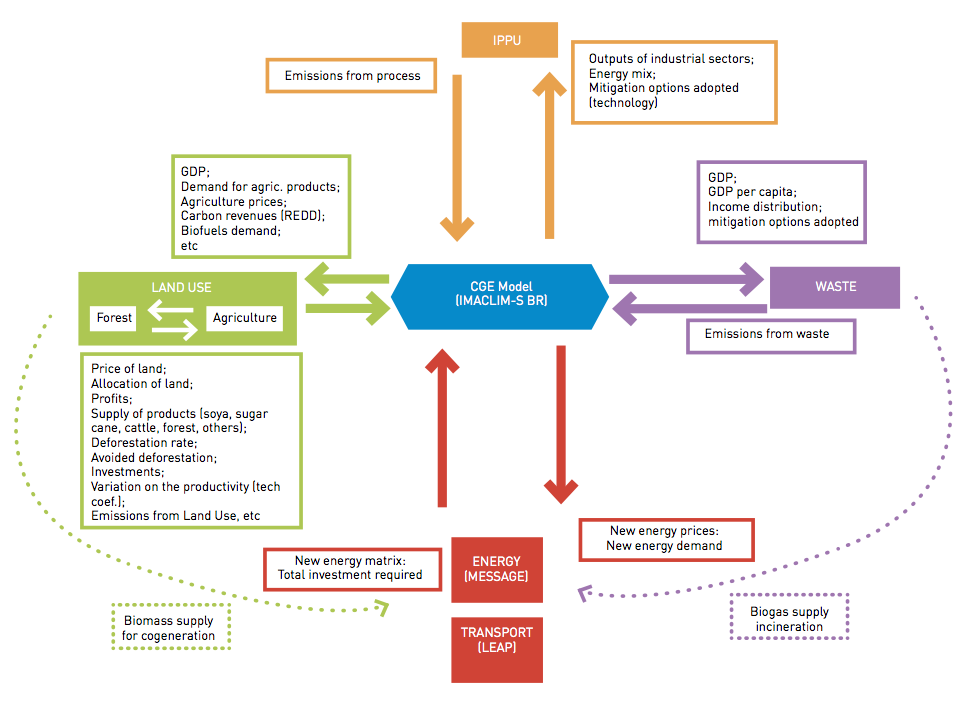Modelling the social costs of mitigation policies
Modelling the social costs of mitigation policies
Jean-Pierre Roux (CDKN Africa) interviews Dr. William Wills, from the Federal University of Rio de Janeiro, on modelling the social costs of mitigation policies in Brazil.
Any efforts to curb greenhouse gas emissions within countries will have ripple effects throughout the economy. Cutting edge computer models currently under development offer useful tools for policy makers to draw up scenarios illustrating the possible outcomes of different emissions reduction actions, and give a platform to compare those outcomes.
A key challenge facing researchers is linking models of sectors such as energy, agriculture, and transport with macro-economic models for a more complete picture of possible futures. Economy-wide models display aggregated economic activity for a country, but do not allow a deep understanding of dynamics within sectors. Conversely, sector-specific models cannot account for how dynamics within a sector will impact on the wider economy. In reality, of course, a dynamic interplay exists between different sectors and the overall economy.
Dr. William Wills from the Alberto Luiz Coimbra Institute (COPPE) at the Federal University of Rio de Janeiro is currently developing a model that assesses the macroeconomic and social impacts of broad mitigations policies for Brazil. His work has focused on linking his own economy-wide model, IMACLIM, with an existing energy optimization model, called MESSAGE.
“IMACLIM calculates the energy demand and energy prices in 2030 given certain carbon policies and sends this information to MESSAGE. MESSAGE calculates the new energy mix and investment needed to reach that. This is sent back to IMACLIM to recalculate energy price and demand. This loop has to run several times before the outputs of the models converge towards equilibria.”
Upon completion, IMACLIM will include links to the energy, transport, waste, land use and industrial sectors. According to Wills, successfully linking the Brazilian land use sector is proving particularly challenging due to the sector’s complexity. The model, with the possible exception of land use, is set for completion by June 2013.
Wills recently presented his research at the Latin American Modelling Project (LAMP) and is excited about what has been achieved to date. Other researchers have shown great interest in the MESSAGE-IMACLIM link, describing it as “interesting and innovative.”
“We now have, by far, the best tool to understand the social costs of mitigation actions in Brazil. In addition, it was clear that not many other groups in the Latin American region currently model detailed economic and social impacts of mitigation.”
Through presentations at international workshops and academic publications, Wills is sharing his methodology in the hopes that researchers from other developing countries will draw on his experience in linking sectoral and economy-wide models for their respective countries.
“One of the strengths of IMACLIM is the complexity of the data it processes. The model is designed specifically to match the Brazilian context. A robust model for one country has taken two years of work.”
Wills is part of the MAPS Programme that draws together researchers from South Africa, Brazil, Columbia, Chile, and Peru. The research is led by the Energy Research Centre at the University of Cape Town, South Africa. CDKN is supporting the MAPS Programme's work on modelling the socio-economic costs of mitigation actions in developing countries.
https://www.youtube.com/watch?v=JUCDqgpxIPw
Image courtesy of Wills, W. 2012. The challenge of linking models – A first draft. Working paper. Centro Clima/COPPE. Federal University of Rio de Janeiro, Brazil. [Available online] http://www.mapsprogramme.org/wp-content/uploads/Policy-Brief-Linking-web.pdf
Further Reading:

